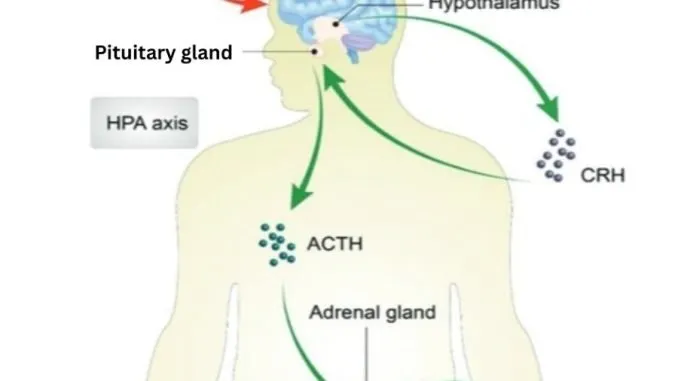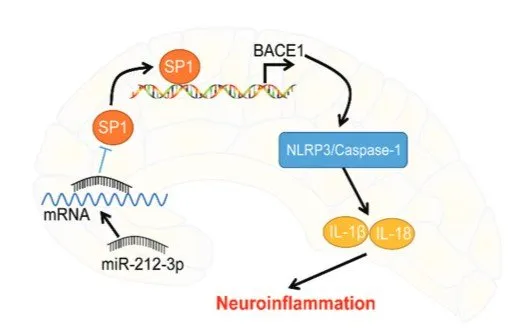
12.07.2023
by Ermina Vukalic
Author Summary
Study Links Thyroid Hormones, Blood Sugar, Blood Lipids, and BMI to the Severity of Major Depressive Disorder and Suicide Risk
A recent study conducted by a team of distinguished researchers provides valuable insights into the potential links between thyroid hormones, blood sugar, and lipid levels and their impact on Major Depressive Disorder (MDD) patients. The collaborative effort brought together scientists from esteemed institutions across China, providing a large sample size and a broad scope for the research. Their findings highlight the crucial role these biological factors could play in MDD prognosis, the likelihood of suicidal behavior, and possible treatment options.
Major Depressive Disorder (MDD) is a debilitating mental health condition that affects millions of people globally. Often characterized by profound sadness and loss of interest in activities, MDD severely impacts the quality of life of those who live with it. While the current understanding of MDD is rooted in various genetic, biological, environmental, and psychological factors, the research team posited that more subtle physiological aspects, such as thyroid function and metabolic markers, could provide a deeper understanding of the disorder and its symptoms.
The research team conducted a detailed examination of first-episode MDD patients, focusing on factors such as thyroid hormones (TSH, TGAB, TPOAB), blood glucose, and blood lipid levels, among other elements. They collected and analyzed data using widely accepted medical instruments such as the Hamilton Depression Rating Scale (HAMD), the Hamilton Anxiety Rating Scale (HAMA), and the Positive and Negative Syndrome Scale (PANSS). By linking the physiological factors mentioned above with the severity of depressive and anxiety symptoms, as well as the occurrence of suicidal behavior, the researchers hoped to discern patterns and correlations that could improve the treatment and understanding of MDD.
A key finding of the study “Association between fasting blood glucose and thyroid stimulating hormones and suicidal tendency and disease severity in patients with major depressive disorder,” was the association between thyroid hormones and MDD symptoms. Patients with varying degrees of depression exhibited abnormal levels of thyroid hormones. Notably, the study revealed a substantial link between thyroid hormones and the occurrence of suicidal behavior. These findings echo those from other studies that showed a relationship between abnormal thyroid hormone levels, MDD, and anxiety.
The research also identified metabolic disorders such as disrupted blood sugar and lipid levels as potential risk factors for MDD. The team found that MDD patients exhibited higher levels of fasting blood glucose compared to those without the disorder, and this was linked with a heightened risk of suicide. It was also revealed that MDD patients who had higher lipid levels (TC, TG, and LDL-C) were more likely to have severe symptoms and suicidal tendencies.
Furthering the study’s implications, the researchers noted that while thyroid hormones and blood sugar could serve as biomarkers for MDD and suicidal behavior, anxiety symptoms also played a significant role. MDD patients who exhibited severe anxiety symptoms were found to have a higher incidence of suicide attempts and psychiatric symptoms.
The study concluded that thyroid hormones, blood sugar, blood lipids, and even the BMI index can impact the severity of MDD and the likelihood of suicidal behavior. The research team advocated for regular monitoring of thyroid function and blood sugar levels in MDD patients after diagnosis to prevent potential risks. However, while the findings were significant, the team acknowledged the study’s limitations, including its cross-sectional nature, which prevents a determination of a causal relationship. Also, the study did not account for external factors such as environment and income, nor did it explore other potential triggers for suicidal behavior in MDD patients. This study represents an important insight in the ongoing quest to understand and treat MDD. By identifying the potential role of these physiological factors, the study offers new paths for future research and could lead to improved treatment options for those suffering from this debilitating condition.
The real-world implications of this study are vast. As we continue to navigate the complexities of mental health, research like this not only advances our scientific knowledge but also opens up potential pathways to better mental health care. By identifying new biomarkers for conditions like MDD, we move one step closer to a future where treatment can be tailored to the individual, and prevention strategies can be more effectively implemented. The authors are optimistic that the insights gained from this study promises to contribute meaningfully to the conversation surrounding mental health treatment and prevention. As researchers continue to unravel the mysteries of MDD, there is a hopeful anticipation that each discovery brings us closer to a world where the burden of this disorder is significantly lessened.
The translation of the preceding English text in Chinese:
由一组杰出的研究人员进行的最新研究为我们提供了有关甲状腺激素、血糖和血脂水平及其对重度抑郁症(MDD)患者影响的宝贵见解。这项联合努力汇集了来自中国各地知名机构的科学家,提供了大样本和广泛的研究范围。他们的发现突显出这些生物因素在MDD预后、自杀行为的可能性和可能的治疗选择中可能发挥的关键作用。
重度抑郁症(MDD)是一种严重影响全球数百万人的心理健康状况。MDD通常表现为深深的悲伤和对活动失去兴趣,严重影响患者的生活质量。虽然我们对MDD的现有理解根植于各种遗传、生物、环境和心理因素,但研究团队认为,更微妙的生理方面,如甲状腺功能和代谢标记物,可以提供对疾病和其症状的更深入理解。
研究团队对首次发作的MDD患者进行了详细的检查,重点关注甲状腺激素(TSH, TGAB, TPOAB)、血糖和血脂水平等因素。他们使用哈密尔顿抑郁量表(HAMD)、哈密尔顿焦虑量表(HAMA)和阳性和阴性症状量表(PANSS)等广泛接受的医学工具收集和分析数据。通过将上述生理因素与抑郁和焦虑症状的严重程度以及自杀行为的发生联系起来,研究人员希望找出可以改善MDD治疗和理解的模式和关联。
该研究的关键发现是甲状腺激素和MDD症状之间的关联。各种程度的抑郁患者都表现出甲状腺激素水平异常。值得注意的是,研究揭示了甲状腺激素和自杀行为发生之间的显著联系。这些发现与其他研究的结果相呼应,后者显示出甲状腺激素水平异常、MDD和焦虑之间的关系。
研究还确定了代谢紊 由一组杰出的研究人员进行的最新研究为我们提供了有关甲状腺激素、血糖和血脂水平及其对重度抑郁症(MDD)患者影响的宝贵见解。这项联合努力汇集了来自中国各地知名机构的科学家,提供了大样本和广泛的研究范围。他们的发现突显出这些生物因素在MDD预后、自杀行为的可能性和可能的治疗选择中可能发挥的关键作用。
重度抑郁症(MDD)是一种严重影响全球数百万人的心理健康状况。MDD通常表现为深深的悲伤和对活动失去兴趣,严重影响患者的生活质量。虽然我们对MDD的现有理解根植于各种遗传、生物、环境和心理因素,但研究团队认为,更微妙的生理方面,如甲状腺功能和代谢标记物,可以提供对疾病和其症状的更深入理解。
研究团队对首次发作的MDD患者进行了详细的检查,重点关注甲状腺激素(TSH, TGAB, TPOAB)、血糖和血脂水平等因素。他们使用哈密尔顿抑郁量表(HAMD)、哈密尔顿焦虑量表(HAMA)和阳性和阴性症状量表(PANSS)等广泛接受的医学工具收集和分析数据。通过将上述生理因素与抑郁和焦虑症状的严重程度以及自杀行为的发生联系起来,研究人员希望找出可以改善MDD治疗和理解的模式和关联。
该研究的关键发现是甲状腺激素和MDD症状之间的关联。各种程度的抑郁患者都表现出甲状腺激素水平异常。值得注意的是,研究揭示了甲状腺激素和自杀行为发生之间的显著联系。这些发现与其他研究的结果相呼应,后者显示出甲状腺激素水平异常、MDD和焦虑之间的关系。
研究还确定了代谢紊乱,如血糖和血脂水平的破坏,可能是MDD的潜在风险因素。团队发现,MDD患者的空腹血糖水平比没有该疾病的人更高,而且这与自杀风险增加有关。还发现,血脂水平较高(TC, TG, LDL-C)的MDD患者更可能有严重的症状和自杀倾向。
研究的影响进一步,研究者指出,虽然甲状腺激素和血糖可以作为MDD和自杀行为的生物标志物,但焦虑症状也起着重要作用。发现,表现出严重焦虑症状的MDD患者自杀尝试和精神症状的发生率更高。
研究得出的结论是,甲状腺激素、血糖、血脂甚至BMI指数都可以影响MDD的严重程度和自杀行为的可能性。研究团队主张,在MDD患者诊断后定期监测甲状腺功能和血糖水平,以防潜在风险。然而,虽然发现重大,但团队承认该研究的局限性,包括它的横断面特性,无法确定因果关系。此外,该研究没有考虑到环境和收入等外部因素,也没有探讨MDD患者自杀行为的其他可能诱因。这项研究在我们不断寻求理解和治疗MDD的过程中提供了重要的见解。通过确定这些生理因素可能的作用,该研究为未来的研究提供了新的路径,可能导致改善这种严重疾病患者的治疗选择。
这项研究的实际影响非常大。当我们继续探索心理健康的复杂性时,像这样的研究不仅推进了我们的科学知识,也为更好的心理健康护理开辟了可能的路径。通过确定像MDD这样的疾病的新的生物标志物,我们离可以根据个人需求量身定制治疗,并更有效地实施预防策 略走得更近了一步。作者们对此项研究的洞见寄予厚望,认为它有望对关于心理健康治疗和预防的讨论作出有意义的贡献。随着研究人员继续解开MDD的奥秘,有一种充满希望的期待,即每一个发现都让我们离一个负担显著减轻的世界更近了一步。
Reference: Liu W, Wu Z, Sun M, Zhang S, Yuan J, Zhu D, Yan G, Hou K. Association between fasting blood glucose and thyroid stimulating hormones and suicidal tendency and disease severity in patients with major depressive disorder. Bosn J of Basic Med Sci [Internet]. 2022Jul.29 [cited 2023Jun.16];22(4):635-42. Available from: https://www.bjbms.org/ojs/index.php/bjbms/article/view/6754
Most read
The Reviewer of the Month for May 2023: Dr. Paul H. Lee
Study Links Thyroid Hormones, Blood Sugar, Blood Lipids, and BMI to the Severity of Major Depressive Disorder and Suicide Risk
A small molecule could help suppress inflammation and protect brain cells, offering potential new strategies for Alzheimer’s disease treatment
The Reviewer of the Month for April 2023: Dr. Ioana-Miruna Balmus
The Reviewer of the Month for July 2023: Enver Zerem, MD, PhD
Archive
2023 6











